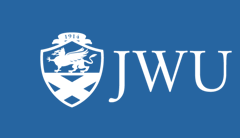To download dissertations and theses, please click on the appropriate "Download" button for your campus to log in and be e-verified. When you reach the "Sign into your JWU email" page, enter your JWU username and password.
Non-JWU users: Please talk to your librarian about requesting this dissertation through interlibrary loan.
College/university presidents and crisis communications: Interpretive content analysis of newspaper coverage in the Northeast
Abstract
Higher education institutions are under increased scrutiny from various constituencies. Frequently, external perceptions of a college or university are based on the image and actions of its president, known to those outside the institution primarily through coverage in the mass media. Support for an institution may depend heavily on these perceptions, and for many leaders, media coverage is most prominent during times of crisis. From the yellow journalism of the late 19th century to the ubiquitous 24/7 news media of the 21st century, American news outlets are often at their most diligent during a crisis, and when crisis strikes, media attention can turn into a “feeding frenzy.” The purpose of this study was to examine how newspapers portrayed college presidents during institutional crises, and to determine if there were any noticeable differences between the ways in which female and male presidents were represented. As the public presence and face of higher education has changed over the past two decades, including more women in college presidencies, an examination of how college presidents are portrayed is essential to acknowledging the changing profile of higher education leaders, especially as this influences public relations and development efforts, and to guiding presidents in their interactions with the press. A qualitative framework was used to examine a purposeful sample of crisis situations (N = 12) to determine how presidents of colleges and universities in the Northeast were portrayed in articles, editorials, and letters to the editor. The analysis identified recurring themes in the coverage, and used interpretive content analysis techniques to look for and to examine language, concept, and gender patterns in the reporting. The period of study was limited to coverage of crises since the turn of the millennium, and to presidents of baccalaureate-granting institutions. The articles selected for analysis were from local, regional, national, and international newspapers. The analysis identified five primary and five secondary themes in the coverage, but no significant gender differences. The interviews with the presidents, three women and three men, offered an understanding of their interactions with the press and insights into their judgments about media coverage during a crisis.
Subject Area
Journalism|Higher Education Administration|Communication|Higher education
Recommended Citation
DiManno, Dorria L, "College/university presidents and crisis communications: Interpretive content analysis of newspaper coverage in the Northeast" (2010). Dissertation & Theses Collection. AAI3426629.
https://scholarsarchive.jwu.edu/dissertations/AAI3426629

